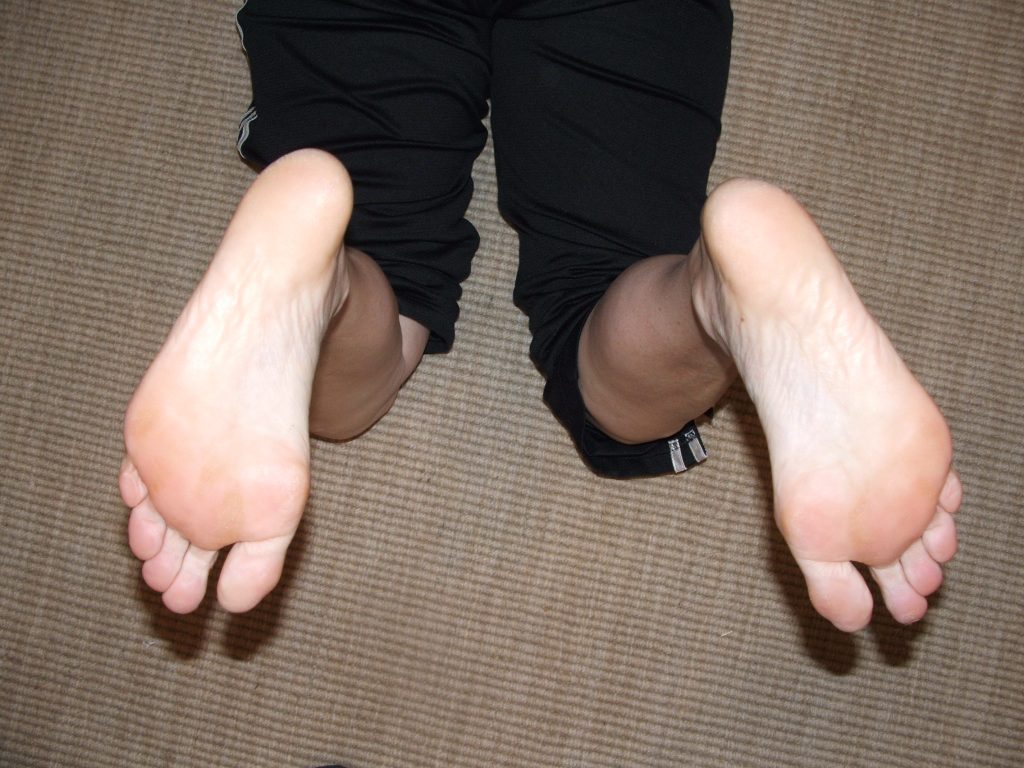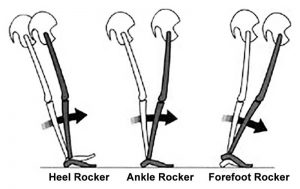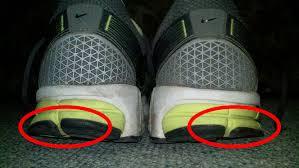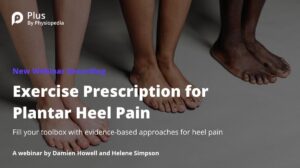Pain on Bottom of Heel: Faulty Shock Absorption

Pain on the bottom of the heel (Plantar Heel Pain) is a complex problem with variable diagnoses and explanations. And, with variable diagnoses there should be variations in treatment. Unfortunately, the common treatment recommendations do not recognize such variability.
Not all pain on the bottom of the heel is the same and not all pain on the bottom of the heel is plantar fasciitis. There are other tissues that can be injured besides the plantar fascia. It could be a tendinopathy of the intrinsic muscles of the foot. It could be calcaneal fat pad injury.
While it is important to identify the tissue diagnosis, it is even more important to identify the how and when a tissue is subjected to abnormal and excessive forces. Identifying specific movements and directions of those movements that contribute to the injury and which forces contribute is critical to identifying the appropriate treatment for the injury.
When walking or running, when the foot is on the ground it is called the stance phase as opposed to the swing phase. Stance phase is assumed to have more importance than swing phase as this is when forces created by gravity and body weight are the greatest. Stance phase is divided into three periods.

The initial period of time during stance phase has been given different names: heel rocker, foot strike, or initial contact. The primary function during the heel rocker is absorbing force or impact of striking the ground.
The second part of stance phase is called ankle rocker, mid stance, or loading response. The primary function during ankle rocker is to provide stability and postural support. It is likely that standing is equivalent to prolonged ankle rocker mechanics. Intervention addressing plantar pain that is related to faulty mechanics during ankle rocker should use tactics that improve stability and postural support, such as, rubber mats to stand on, fresh supportive shoes, appropriate shoe inserts and strengthening exercises for the intrinsic muscles of the foot. Of course spend less time standing makes sense.
The third time period of stance phase is called forefoot rocker, terminal stance, or heel off to toe off. The primary function during forefoot rocker is propulsion forward and energy conservation. More in-depth discussion of heel pain occurring during the forefoot rocker can be found in the article “Pain at the bottom of the heel: too much big toe motion”
The following discussion is how to identify whether plantar heel pain may be occurring because of faulty movement during the heel rocker, and will identify actions to avoid (don’t do) and interventions (do do).
If you have plantar heel pain and you see that:
- The soft tissue and fatty tissue on the bottom of the painful heel looks and feels different then the non-painful heel, it may appear puffy, red, or relatively compressed and thin
- The sole of the shoe at the back and bottom of the heel on the painful heel side is compressed and worn out (notice right shoe sole is more compressed in figure below)

- You take long steps or strides
- You make a loud sound at foot strike, friends accuse you of walking loud
- You have an accentuated heel strike when walking, or prolonged period of timewhen only the heel is contact with the ground, best described as “goose stepwalking”
- The painful foot frequently crosses the mid-line of the body when striking theground (leg crossover in figure below)

- The knee hyper-extends at foot strike
- When standing for prolonged periods that you frequently stand with a majority ofweight on the leg with the painful heel, often with pelvic drop and/or knee hyper-extension can be described as “standing with an attitude” posture

- Stand and carry or hold child on the hip of the painful side
- You have weakness when performing unilateral heel raise
- You have gained body weight and your Body Mass Index is “overweight orobese”
Then don’t do this;
- Spend time barefoot, wear flip flops, low thin sandals, and shoes with low heels
- Walk/run with a loud foot strike
- Walk/run with the foot striking the ground crossing the mid-line of the body
- Walk/run/stand with knee hyper-extended
- Stand with a majority of weight on painful side, minimize carrying child on hip, “stand with an attitude posture”; stand with feet crossed with majority of weight borne on painful heel
- Sit with knees crossed
- Iliotibial band (IT band) stretching exercises
- Walk/run with accentuated heel strike and stand with hyper-extension of kneeand avoid stretching exercises for the calf muscle.
- Eat too many calories
Do do the following:
- Replace worn shoes, select shoes with relatively higher heel, good cushioning, and the heel of the shoe should be beveled (in figure below the shoe on left has beveled heel, shoe on right has out flare heel)

- Use soft heel cups
- Consciously modify gait: walk quietly; take shorter steps; take more steps perminute
- Keep foot strike on the same side of the mid-line of the body, whenwalking/running keep day-light between knees
- Walk with more knee flexion, and more of a foot flat foot strike
- Heel raise strengthening exercises with knee in slight flexion to strengthen thegastrocnemius muscle
- Stand with weight equally distributed between both feet
- Decrease caloric intake and increase caloric expenditure
As you can see from the above lists pain on the bottom of the heel can be a complex problem. The list also demonstrates there are many active interventions available for the individuals with plantar heel pain. Contrast this to common passive interventions such as: medications; injections; acupuncture: various types of massage; and ultrasound therapy which do not address potential contributing factors, and have short term effects.
The above discussion addresses faulty mechanics only during heel rocker. There are two other time periods during stance phase ankle rocker and forefoot rocker. Plantar heel pain could result from a combination of faulty mechanics of more than one of the time periods of stance phase requiring a combination of and variations in treatment strategies. Some interventions such as decreasing Body Mass Index are applicable across all three time periods of stance phase. Some interventions vary across the three time periods of stance phase, such as calf stretching which is not indicated during heel rocker and maybe indicated in ankle rocker. Evaluation by a healthcare professional can help demystify this complex problem.
A on demand-video webinar exploring this topic is available at Plus by Physiopedia entitled “Exercise Prescription for Plantar Heel Pain Webinar”
Use this code – “Damien25” for a 30% discount to access this webinar as well as the more than 500 continuing education webinar courses available at Plus by Physiopedia. This is the link http://bit.ly/DAMIEN25 with the 30% discount code embedded.
Damien Howell Physical Therapy – 804-647-9499 – Fax: 866-879-8591 At-Home, At Office, At Fitness Facility – I come to you, I do home visits Damien@damienhowellpt.com

